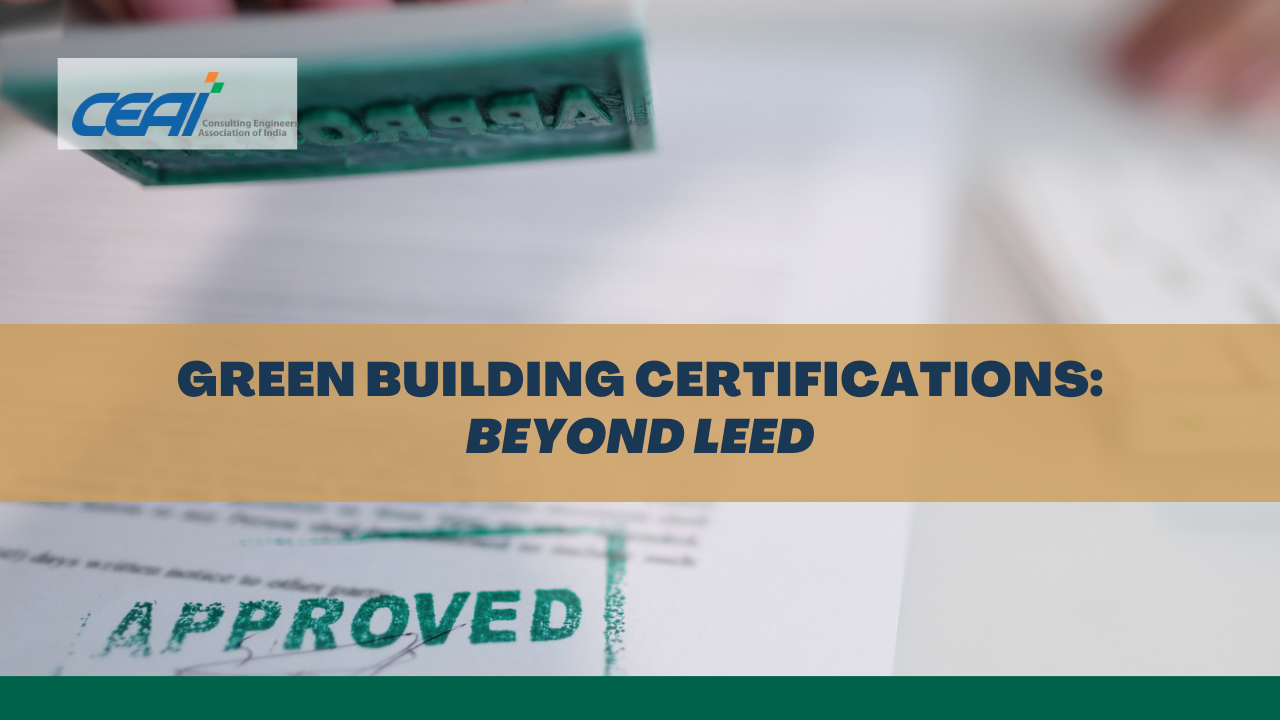
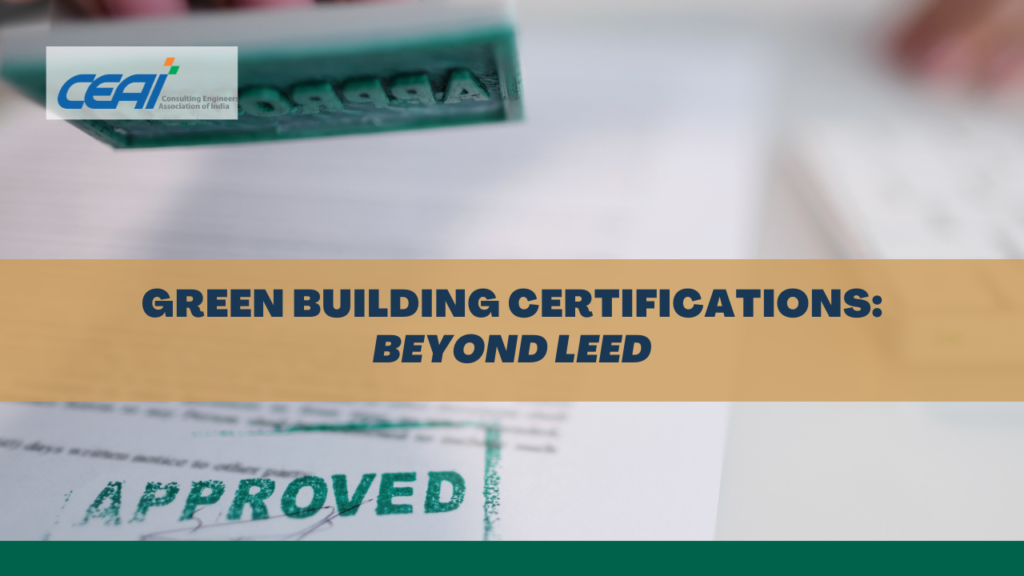
In recent years, the construction industry has witnessed a paradigm shift towards sustainability, and green building certifications have played a pivotal role in this transformation. While LEED (Leadership in Energy and Environmental Design) has long been recognized as a pioneering certification for green buildings, a host of other certification programs have emerged, each with its own unique focus and criteria. As the world embraces a more eco-conscious approach to building design and construction, it is essential to explore the expanding landscape of green building certifications and their contributions to a more sustainable future.
WELL Building Standard: Prioritizing Human Health and Well-Being
While LEED emphasizes environmental aspects, the WELL Building Standard places human health and well-being at the forefront of building design. This certification evaluates factors such as indoor air quality, natural light exposure, acoustic comfort, and ergonomic design to create spaces that promote the health and productivity of occupants. From enhanced ventilation systems to biophilic design elements that bring nature indoors, the WELL Building Standard addresses the critical connection between built environments and human well-being.
BREEAM (Building Research Establishment Environmental Assessment Method): A Global Perspective
Originating in the United Kingdom, BREEAM has gained widespread recognition as one of the most widely used green building certifications globally. With a comprehensive approach that considers various environmental, social, and economic factors, BREEAM assesses a building’s performance across its entire life cycle. This certification addresses a broad range of criteria, including energy efficiency, waste management, and ecological impact, making it applicable to diverse building types and regions worldwide.
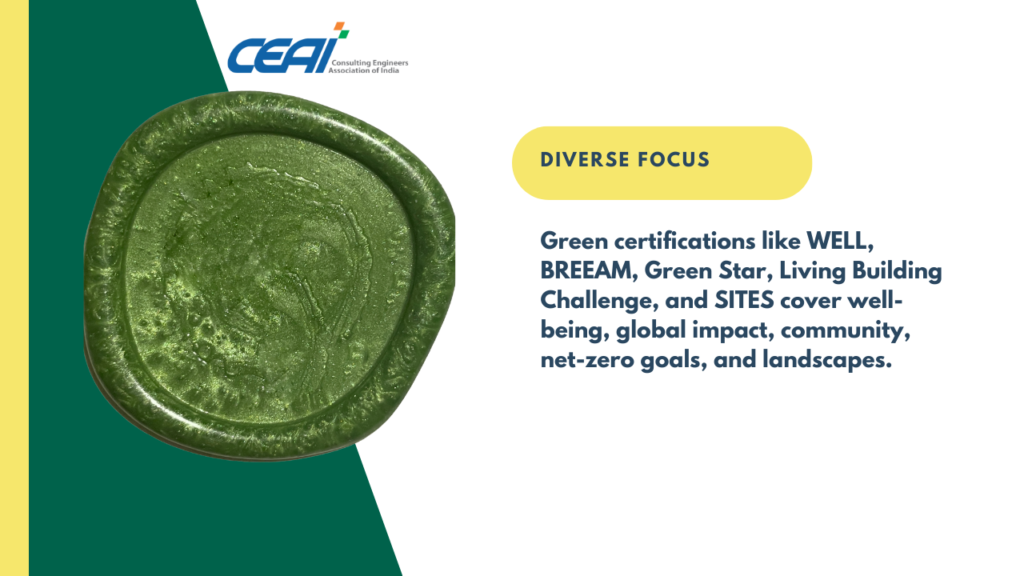
Green Star: Fostering Sustainable Communities
Green Star, developed by the Green Building Council of Australia, focuses not only on individual buildings but also on the broader impact of developments on the surrounding communities. This certification evaluates sustainable practices in areas such as governance, innovation, and social responsibility. Green Star aims to foster sustainable urban development and promotes the creation of environmentally responsible and inclusive communities.
Living Building Challenge: Pursuing Net-Zero and Regenerative Goals
For projects seeking to go beyond conventional green building standards, the Living Building Challenge sets ambitious targets for net-zero energy, water, and waste. This certification program requires buildings to operate solely on renewable energy, harvest and treat their water on-site, and generate zero waste. Moreover, the Living Building Challenge encourages buildings to have a positive impact on their ecosystems, promoting regenerative design
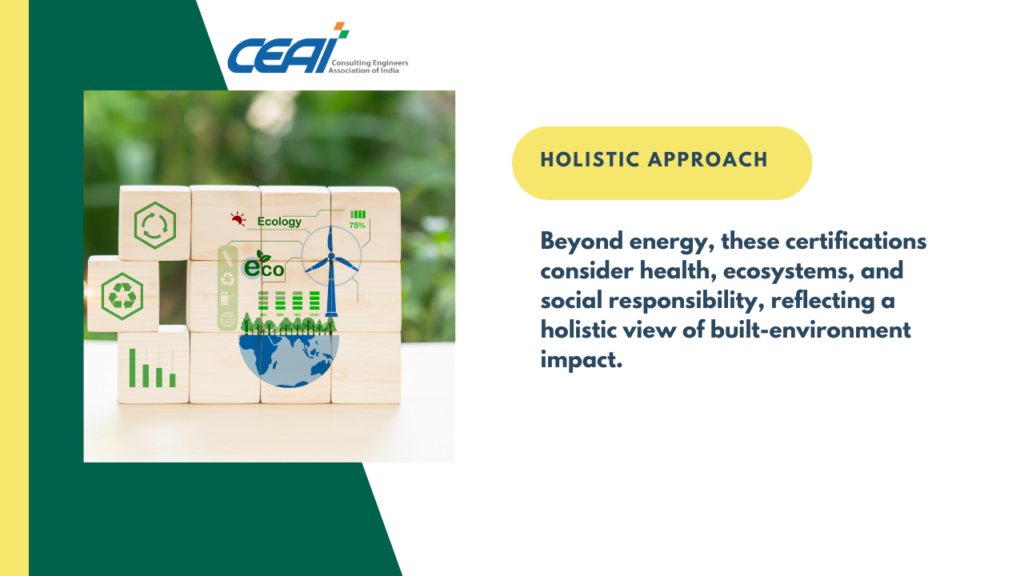
SITES (Sustainable Sites Initiative): Enhancing Landscape Sustainability
SITES is a certification program that focuses on sustainable landscape design, development, and management. It evaluates a project’s impact on the surrounding natural environment, considering factors such as habitat restoration, stormwater management, and soil health. SITES-certified projects prioritize ecological integrity and aim to enhance the sustainability and resilience of their landscapes.
The Evolution of Green Building Certifications
As the demand for sustainable building practices continues to grow, green building certifications have evolved to address specific environmental and social challenges. These certifications provide a framework for industry professionals to design, construct, and operate buildings that are not only environmentally friendly but also promote the health and well-being of occupants.
Beyond the traditional focus on energy efficiency and resource conservation, modern green building certifications embrace holistic approaches that consider the interconnectedness of the built environment and its inhabitants. By expanding the range of certifications available, the industry can address diverse sustainability objectives and move towards a more regenerative and resilient built environment.
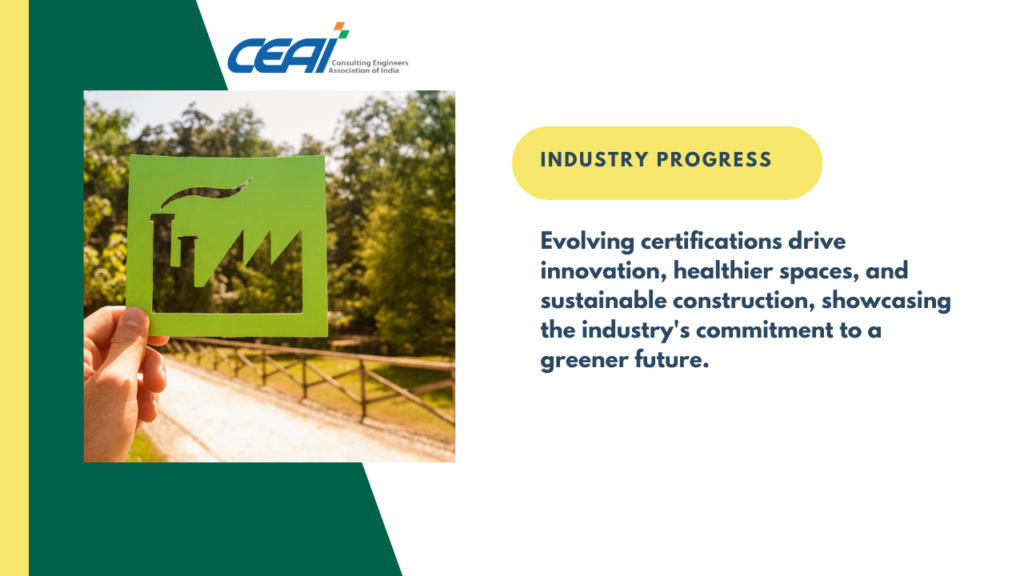
In Conclusion
Green building certifications have come a long way, evolving to encompass a broader range of environmental, social, and human-centric considerations. While LEED continues to be a benchmark for sustainable design and construction, other certifications like the WELL Building Standard, BREEAM, Green Star, Living Building Challenge, and SITES offer specialized approaches that address specific sustainability goals.
The diversity of green building certifications reflects the increasing awareness of the built environment’s profound impact on our lives and the planet. By embracing these certifications, the construction industry can drive innovation, foster healthier spaces, and contribute to a more sustainable future for generations to come.
